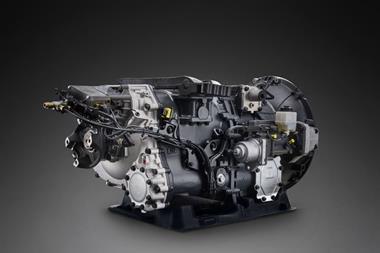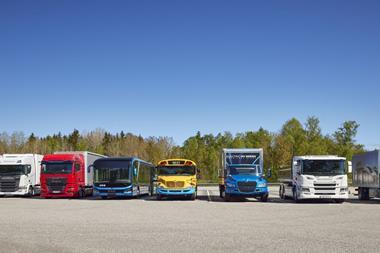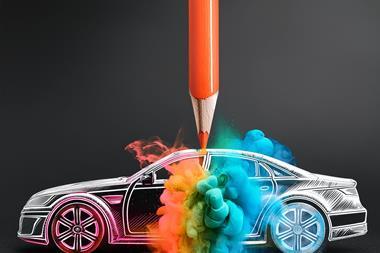Now the fifth-biggest nation for automotive production, Korea's success lies in exports to global markets. Production and sales are still strong, but challenges include competition at home and localisation overseas 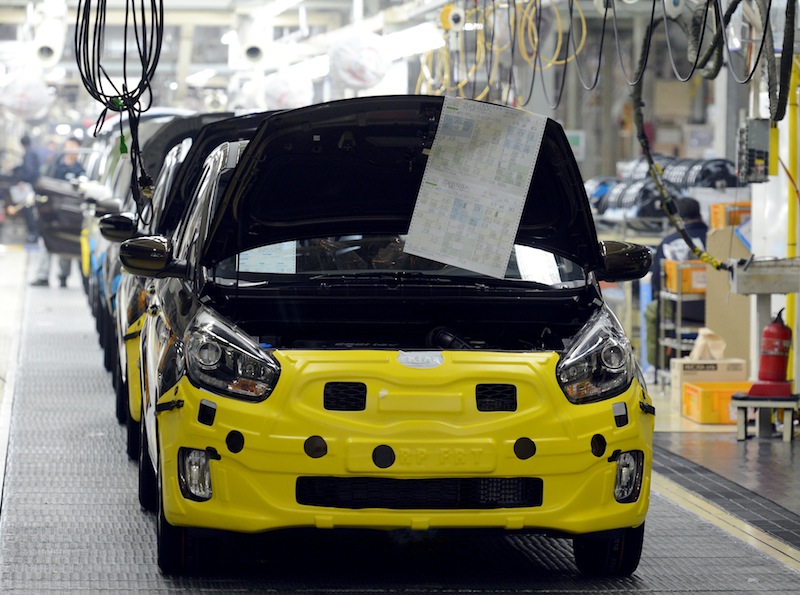 South Korea has done staggeringly well to become a global automotive production powerhouse within the last 20 years, but the numbers could be about to plateau or even tail off as its export model becomes vulnerable to trends such as production localisation abroad and the rise of premium brands at home. The numbers are indeed huge. Last year, South Korea built 4,524,932 cars and commercial vehicles (CVs), up from 3.2m in 2003 – impressive figures for a country with a population of just under 50m. To put that into perspective, the UK has around 64m people but last year built 1.6m cars and CVs. Korea is now the fifth-biggest country for vehicle production behind Germany, and ahead of India, Mexico and Brazil.
South Korea has done staggeringly well to become a global automotive production powerhouse within the last 20 years, but the numbers could be about to plateau or even tail off as its export model becomes vulnerable to trends such as production localisation abroad and the rise of premium brands at home. The numbers are indeed huge. Last year, South Korea built 4,524,932 cars and commercial vehicles (CVs), up from 3.2m in 2003 – impressive figures for a country with a population of just under 50m. To put that into perspective, the UK has around 64m people but last year built 1.6m cars and CVs. Korea is now the fifth-biggest country for vehicle production behind Germany, and ahead of India, Mexico and Brazil.
The key to Korea’s success has been its exports. Of the 4.5m vehicles made last year, a fraction over 3m were shipped abroad; domestic sales were 1.45m. There was a slight increase in production in 2014 after two years of modest falls but there are storm clouds ahead, analysts warn. “The headwinds are: intensified competition in the domestic market and exports constraint stemming from localisation overseas,” says Ian Park, production analyst for South Korea at IHS Automotive. Exports in August were slightly down compared with the same month the year before in terms of numbers and more sharply down, by 9%, in revenue, according to figures from the Ministry of Trade and Industry. A bigger contrast was the drop of 30% from July’s figures. The Ministry told local news agency Yonhap that this was due to unfavourable exchange rates plus slumps in markets like Russia and Latin America.
Korea’s biggest vehicle-maker, Hyundai, saw its operating profit fall by 17% in the first half of the year and echoed the Ministry in saying that slow growth in emerging markets and currency fluctuations were the “main culprit” for the global sales drop of 3.2%. Hyundai dominates in Korea, even without group partner Kia. Their parent company, Hyundai Motor Group, is the country’s third-largest ‘chaebol’ or industrial group and derived 52% of its $229 billion revenue in 2014 from its automobile side, with vehicle parts accounting for 21%. In Korea, Hyundai and Kia have three plants each, and the scale of production is vast. For example, Hyundai’s Ulsan complex comprises five separate factories and is believed to be the largest in the world, making 1,525,000 cars last year.
"The headwinds [for vehicle-makers in Korea] are: intensified competition in the domestic market and exports constraint stemming from localisation overseas”– Ian Park, IHS
But the Hyundai brand also has an expanding footprint abroad – and that is proving to be a challenge. In the first six months of this year, it built just over 600,000 cars at home and 1.47m abroad, although both numbers were slightly down on 2014. Its biggest market is China, reperesenting 22% of sales, followed by the US (15%) and Korea (14%), where last year it had a 47.2% share, then Europe (8%). Hyundai is also expanding in India, where it is number two in the market behind Maruti Suzuki and currently looking for a site to build a third factory. Furthermore, the brand is building a new plant in China, while Kia is constructing one in Mexico for a production start in 2016. This localisation has been one of the keys to the success of Hyundai-Kia abroad, but the danger for its local production is that lower-cost bases such as India – already an export hub for the company – will come to the fore in future.

Local makers and domestic market share:Hyundai – 685,191 (47%)Kia – 465,200 (32%)GM Korea – 154,381 (11%)Renault Samsung – 80,003 (5.5%)Ssangyong – 69,036 (4.7%)Top six importers and import market share:BMW – 40,174 (20%)Mercedes-Benz – 35,213 (18%)Volkswagen – 30,719 (16%)Audi – 27,647 (14%)Ford – 8,718 (4.4%)Toyota – 6,840 (3.5%)
Source: KAMA
RSM now also makes the Nissan Rogue SUV at Busan for the US market and is aiming to build 80,000 a year, up from 26,471 in 2014, the first year of production. If so, that will see Busan, with its annual capacity of 300,000 units, edging nearer the 275,269 total for 2010, whereas last year it was nearly half that at just 139,735. The Rogue would then supercede Busan’s current top model, the QM5/Koleos SUV.
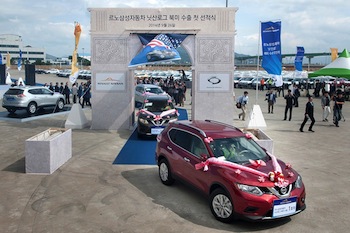 RSM now makes the Nissan Rogue at Busan for the US market
RSM now makes the Nissan Rogue at Busan for the US marketGM having a tough timeExports are also a big driver for the country’s third-biggest automotive OEM after Hyundai and Kia. GM Korea was formed when General Motors bought Daewoo’s carmaking operation for a knockdown $1.2 billion in 2002 and for a long time it proved to be a smart purchase. It gave GM’s Chevrolet brand quick access to foreign markets and an established plant at Gunsan, on the west coast, in which it first made rebadged Daewoos, then its own models.
That plan was shaken in 2013, when Chevrolet decided to end sales in Europe and was further affected by the company’s withdrawal from Russia, reducing the number of export markets for Gunsan production. Park at IHS says the factory is now running at 60% capacity, compared with around 80% for the rest of Korea’s carmakers, and this is hurting GM. “It will be difficult for GM Korea to make up for the volume losses in exports unless it finds ways to drive efficiencies to remain competitive and become an export hub again,” he states.
Last year, GM Korea made 629,230 vehicles, of which 154,381 were sold domestically. However, to the end of August this year, the company’s exports had fallen 6.6%, with August showing a drop of 25%, according to figures from the Korea Automobile Manufacturers’ Association (KAMA). In September, Stefan Jacobi, GM’s head of its international division, admitted that the OEM might reduce production capacity and staff numbers further if the situation does not change.
Another problem for GM Korea stems from the country’s relatively high costs. These could perhaps be accommodated if the OEM focused on a larger vehicle, but Korea is GM’s base for A-segment vehicles – the Opel Karl/Vauxhall Viva for Europe and the Chevrolet Spark for other regions. “South Korea is considered to be a high-cost production base among GM affiliates,” says Park, adding that eventually this could mean a production shift for the smaller cars. “India could be a potential threat for GM Korea, since they have [a greater] advantage in terms of labour costs.” India is where Ford is about to build its new Ka A-segment car for Europe, and the country has already taken some of GM Korea’s export business after production of the Chevrolet Spark for the Mexican market was moved there from Korea.
More comforting for GM Korea is that it is making up for some of these lost markets by finding new customers for its output, such as the Trax B-segment, now being shipped to the US. It has also reportedly secured the production of the next C-segment Cruze from 2016.
Korea stalling on free tradeThe country’s high export rates have become a sore point with other nations, which reckon that Korea is not quite so welcoming toward foreign makers in its own country. The European manufacturers’ association, ACEA, has flagged up concerns with the implementation of a free-trade agreement (FTA) with the EU that was signed in 2011. In a statement this year, ACEA said that the Korean authorities “remain reluctant to dismantle existing non-tariff barriers” and that “new barriers have emerged”. It noted that Korean imports to Europe increased 41% last year to 381,000 vehicles, while Korea took just 80,000 from Europe. The association complained that increasing numbers of European premium cars heading there had more to do with consumer demand “rather than the effects of the FTA itself”. In 2012, the French government even accused Hyundai and Kia of “dumping” cars on the European market.
The US took a long time to ratify an FTA that was signed in 2007 but not in force until 2012, largely down to squabbles about cars (and beef). Under the terms of this deal, the US agreed to drop a tariff of 2.5% on passenger cars as of 2016, while Korea cut its 4% tariff on US imported cars. One clause that the US inserted was that any manufacturer operating out of the US and selling fewer than 25,000 cars a year in Korea would be exempt from Korean safety regulations, providing that they passed the US equivalent. This is not going to be a problem; the biggest-selling US maker in Korea, Ford, shifted just 8,718 cars there in 2014.
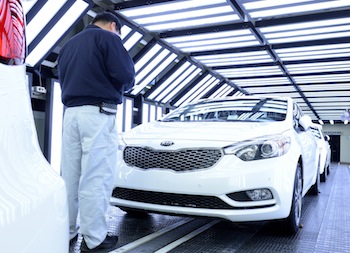 Korean car plants such as Kia Hwasung (above) are big exporters but the country has not been as welcoming to foreign makers
Korean car plants such as Kia Hwasung (above) are big exporters but the country has not been as welcoming to foreign makersBut foreign brands are making in-roads into the domestic market, particularly the German premiums. The biggest selling non-domestic maker, BMW, hit 40,174 sales in 2014 according to KAMA, up from 28,240 in 2012. Mercedes was not far behind at just over 35,000 sales, with Volkswagen and Audi rounding out the top four; Ford was fifth.
The German premiums are helped by the fact that Korea is one of the very few markets outside Europe that likes diesel cars, so much so that sales in the first six months of this year outstripped those of petrol vehicles at 52% of the total, an all-time high according to Yonhap. Back in 2012, BMW’s biggest seller was the 520d. However, this enthusiasm might wane in the aftermath of the recent diesel scandal; Korean authorities have said that they plan to test VW diesels sold there to check that they meet the Euro 5 emissions standards which apply nationally.
Korea’s local motorcycle manufacturers have never shown the same export canniness as the carmakers and are now being punished at home as foreign companies chip away at their dominant position. The biggest in terms of domestic sales is Daelim, which gained 50% of the home market in 2014, largely though scooter sales. The company launched in 1962 and received a helping hand from 1981 via a 20-year partnership with Honda. The company also has a healthy business making parts for automatic gearboxes, including cases, with Hyundai, Kia and Audi among its customers. This is just as well, because although Daelim’s 50% dominance with sales of 45,695 looks good on the surface, it is is quite a drop from the 74% the company enjoyed in 2010, according to research from Mintel.
Those benefiting from this situation include Daelim’s former partner, Honda, which has gone from a share of just 0.3 % in 2010 to 14% last year with sales of 13,067. Also doing well are premium foreign manufacturers targeting wealthier leisure buyers, with BMW and Harley-Davidson both now claiming a 2% market share. Other thriving companies are Suzuki and Taiwanese scooter specialist Kymco, each with a 3% share.
In its ‘Motorcycles – South Korea’ analysis, Mintel said the local makers have been elbowed out thanks in part to “aggressive marketing” by foreign OEMs. Also losing out is Korea’s second-biggest manufacturer, Hyosung, which started in 1978, making Suzuki bikes under licence, and has changed ownership three times since then. The company is now owned by Kolao Holdings, trading under the name KR Motors, and its management fully admits that more needs to be done to promote the brand abroad. A message from the chairman on its website reads: “The footstep of the Korean motorcycle brand is too weak in this huge world motorcycle market”. Hyosung boldly states that it wants to become number one in Korea and number five in the world, although without giving a timeframe. It is a tall order, given the brand’s near invisibility worldwide.
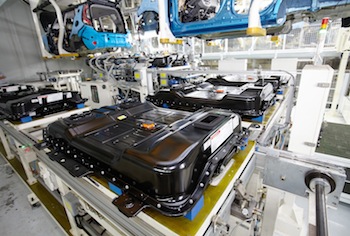 Kia's Soul EV is at the forefront of efforts to make the Korean car industry greener, but progress has been slower than expected
Kia's Soul EV is at the forefront of efforts to make the Korean car industry greener, but progress has been slower than expectedThe future did not work out as expected, and although Kia’s Soul EV represents the most determined effort yet to build a practical electric car, no manufacturer is making easy progress. Renault Samsung, for example, last year made just 368 of its SM3/ Renault Fluence EV at Busan. LG Chem has some big-name customers, including GM for the Chevy Volt/Opel Ampera as well as Hyundai and Kia for their hybrid cars, but by 2013 The Korea Times reported that the LG Chem factory at Ochang was running at just 20% of capacity.
This year, LG said it would sell its battery separator production facilities at Ochang because of low profitability, Korea Business reported in July. However, Korea is still determined to transition to electric cars, a desire seen most clearly on the island of Jeju off the country’s southern tip, which has declared that eventually all of its 300,000 cars will be electric. A huge investment in charging facilities as well as generous incentives are being offered to make that happen, while the capital, Seoul, is also pushing for more EVs through investment in 100,000 charging sites.
As with cars, Korea has enjoyed a healthy home-grown commercial vehicle industry. But similarly, the main protagonists – Hyundai Truck and Tata-Daewoo – are being slowly squeezed in the local market by foreign players. At the moment, Hyundai is by far the biggest thanks to healthy sales in the sub five-tonne segment, but Tata-Daewoo has a bigger presence in the seven- to 12-tonne market, and also in the 12-tonne-plus truck segment. Hyundai describes its Jeonju truck plant in the south-west of the country as the world’s biggest, last year building 70,000 vehicles there, up from 60,000 in 2013. It plans to expand production to 100,000 by 2020, reported Reuters in February. Hyundai also started making its Trago trucks in China last year and has a joint venture in Turkey to build light commercial vehicles.
Tata, which bought Daewoo’s truck business in 2005, said its revenues in Korea were up 12% in the last fiscal year ending March 2015, selling 11,710 vehicles and exporting 4,902 of those, an increase of 22% on the year before. It makes the higher-end Prima line of trucks including dump trucks, tractor-trailers, mixers and cargo vehicles, as well as buses.
Tata has had to move toward more premium sales because new Euro 6 emissions regulations, starting in January this year for vehicles weighing over 3.5 tonnes, are giving hope to foreign makers. Companies releasing new models this year include Daimler, Scania and Volvo, all of which have Euro 6 models ready for the market. Other makers more amenable to Korea will be the US brands, which have seen 10% tariffs on imported trucks fall to nothing thanks to the free-trade agreement. Korean truck-makers, on the other hand, are subject to a 25% tariff lasting until 2021, despite this deal.
































